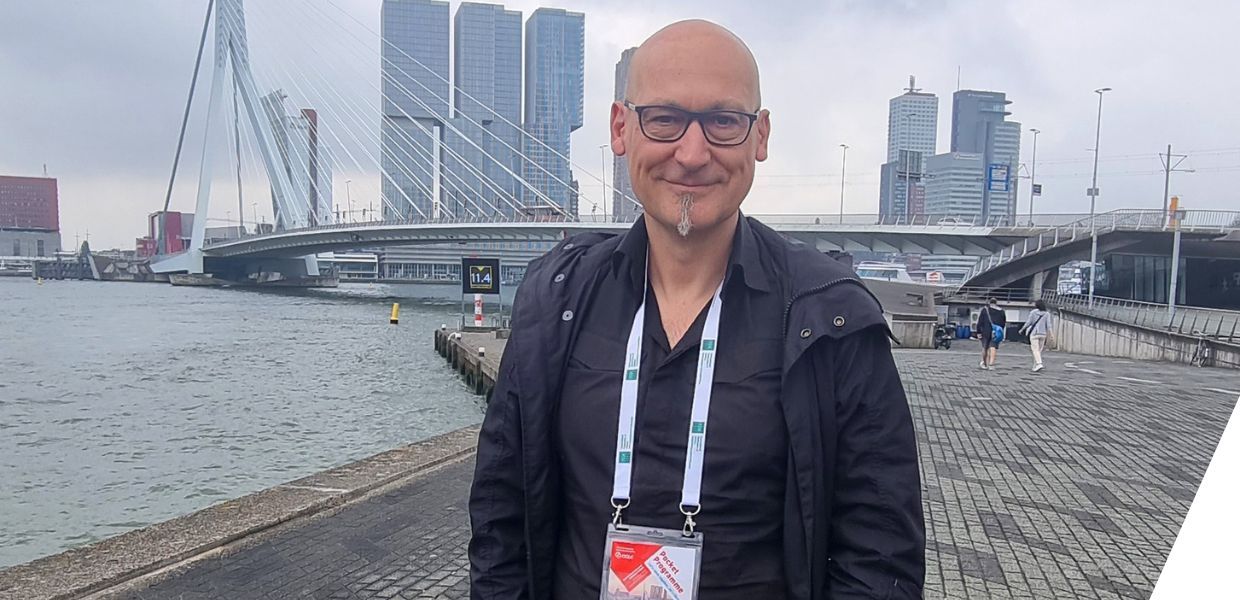Please tell us about yourself.
I currently work for the Belgian Science Policy Office (Belspo) in the field of innovation, technology, research and digital cultural heritage. I have a background in museums, and previously worked as a Technology Adviser for the Royal Museums of Arts and History, one of the biggest Belgian museums with a huge collection of Egyptian, Roman and Gallo Roman artefacts. My favourite is a scale model of Old Rome (you really have to see this 3D model once in your life!).
I work to bring together cultural heritage and research. I’m the elected Chairperson of the General Assembly of DARIAH, the European research infrastructure for humanities research. DARIAH is a consortium partner of the common European data space for cultural heritage. I’m also involved in the governance of the European research infrastructure for heritage science, E-RIHS, where we see similar challenges to those the Europeana Initiative deals with around (research) data from cultural heritage objects.
Why did you originally join ENA?
I was one of the first members of the ENA in 2014! At that time, I was working in the museum as the coordinator for the digitisation programme and I was running projects with the Europeana Initiative including the Athena project, Linked Heritage, Europeana Inside and Europeana Photography. Participating in those successful projects was extremely rewarding, not only because of the benefit to the Europeana platform, but also for the human side, the inspiring people I got to know and the exchange of knowledge.
ENA came to existence at the right moment. It was the beginning of a permanent community for exchanging ideas on digital cultural heritage, technologies, new projects, innovative ideas and insights through different working groups and physical get-togethers. ENA was a remarkable success from the beginning. If I recall correctly, we started with over 1,000 members in 2014.
How has being an ENA member benefitted you professionally or personally?
As an ENA member you are part of an international community which is very enriching. I bring my federal, Belgian perspective and connect it with perspectives from other countries, regions and institutions.
As an ENA member, you can become active in different Task Forces and Working Groups which explore relevant topics for the cultural heritage sector and help to set the direction of the data space for cultural heritage. I was active in several ENA Working Groups in the past, and I’m now a member of a cross-Initiative Working Group exploring innovative operating models for the data space. The word ‘decentralisation’ will become an important topic in the future of each data space. We are investigating a federated model of thematic, regional, and national ‘nodes’ where the core infrastructure will remain centralised but where you have strong governance to cooperate and coordinate with a lot of individual entities. This is asking for a change in the actual governance model and is not obvious. In this Working Group we are examining the different use cases for the data space of cultural heritage in a decentralised model.
How have you got involved in the Europeana Network Association?
I’m an active member of the Europeana Research Community, my first love, and I see an enormous potential for computer scientists, educators and researchers in cultural heritage, audiovisual heritage, music, humanities, legal topics and AI to be involved in this ENA community. I attend research community events to advocate for the community and to bring in expertise, use cases and best practices.
I am also an elected ENA Members Councillor. I wanted to contribute to discussions around the growth of the data space and to help elevate the maturity of the ENA. I’m impressed by what we have achieved - we have grown to nearly 5,000 members, have a good evidence-based strategy and participate in important Working Groups, such as the one on decentralisation. The ENA is even a partner in the ECHOES project, which is establishing the core infrastructure and governance model of the European Collaborative Cloud for cultural heritage. It is only possible to be an active partner in the construction of the data space with a diverse, professional and active moderated community.
What is your best ENA memory/ experience?
For me, the Europeana conferences have always been the most interesting part of the Europeana Initiative. They are the moments when the Europeana community ‘awakens’ to meet, learn and share experiments, practices and digital cultural heritage projects. They are always well-organised by the Europeana team and programme committee.
The best one I remember was the conference in 2019 organised in the impressive National Library of Portugal. A lot of old and new faces came together! It was the first time that people were showcasing projects under the umbrella of artificial intelligence and citizen sciences, and I particularly enjoyed a fado concert in the entrance hall. The conference also marked the end of physical meetings for several years, as the COVID-19 pandemic hit Europe in 2020. Now hybrid meetings are the standard, but you cannot replace a vibrant and dynamic Europeana Network with a virtual one.
Why should someone join ENA?
As an ENA member you join a European family of digital cultural heritage enthusiasts. You do not need to work in a library, museum or archive to become a member. ENA counts numerous talents and professions. Do you know that a huge part of our community considers themselves as cultural heritage, humanist and computational researchers? Even though I do not work in a legal department, I am still updated with relevant copyright legislation, all kinds of resources you get easily access to when you are a member of ENA.
Another advantage is that you can co-create the developments in the data space for cultural heritage. Some of the working groups and projects might interest you. You can influence and make a difference!


